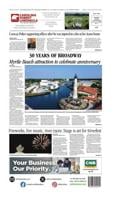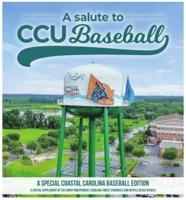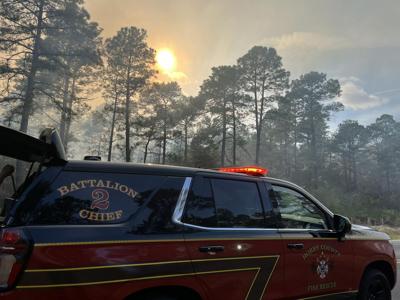Carolina Forest, which dodged a bullet in early March when a wildfire burned up to the sprawling communityŌĆÖs doorstep, can learn not to burn.
That was the sum of the message delivered to the Carolina Forest Civic Association on June 18 by Drake Carroll, Firewise USA and fire prevention coordinator with the South Carolina Forestry Commission.
Carroll spoke to about 30 residents at the Carolina Forest Recreation Center, and said Carolina Forest is a good example of the wildland/urban interface, where communities ŌĆ£butt up to the wildlands.ŌĆØ
A wildfire that was sparked by a resident burning debris in a backyard burn pit during a state-wide burn ban scorched over 2,000 acres, forced evacuations and took nearly three months to be 100% contained due to smoldering hotspots.
Named the Covington Drive Fire after the area where it originated, the blaze cost the South Carolina Department of Forestry alone more than $2 million to contain.
No homes were burned, thanks to a timely shift in the wind, but several homes sustained damage from the extreme heat.
Carroll, the state fire expert, said his services are available for the asking, and can include recommendations on fire-safe landscaping, creating defensible spaces, community ingress and egress for evacuation purposes, and architectural means of making housing more fire-resistant.
To form a Firewise USA program, Carroll said residents or an HOA would have to create a board or committee of volunteers composed of residents and partners like fire departments or forestry agencies.
The committee or board would define boundary areas for the program that incorporate at least eight but not more than 2,500 dwellings. Multiple Firewise USA sites can be located within a city, town or planned community with an HOA.
SCFC would then conduct a community-wide assessment recommending steps that could be taken to improve fire safety.
After the community-wide assessment, homeowners could have their individual properties assessed for risk and be given ideas on how to improve fire safety.
ThereŌĆÖs also a possibility that homeowners in neighborhoods that establish Firewise USA programs could get a break on their fire insurance premiums at some point in the future.
ŌĆ£In South Carolina you donŌĆÖt lose enough homes for insurance (companies) to give discounts for Firewise programs,ŌĆØ Carroll said, adding efforts are underway ŌĆ£to make that happen."
Carroll filled a table with free educational pamphlets and booklets designed to give residents a fighting chance against wildfires by creating defensible spaces around homes and other means.
State Rep. Tim McGinnis (R-Myrtle Beach), who represents the Carolina Forest area in S.C. House District 56, also addressed the crowd.
He outlined his efforts to dramatically increase fines and prison sentences for illegal burning that sparks wildfires. He sponsored two bills in this yearŌĆÖs legislative session, but neither made it to the House floor for a vote.
The penalties currently are relatively light.
Alexandra Bialousow, 40, of Myrtle Beach, was arrested in connection with the Carolina Forest fire, also known as the Covington Drive Fire, after she lost control of a fire in her backyard burn pit while a burning ban was in place.
She is charged with one count each of negligently allowing fire to spread to lands of another, and regulation of fires on certain lands.
Bialousow has requested a jury trial, and faces up to 30 days in jail and a $200 fine on each count if convicted.
One of McGinnisŌĆÖ bills ŌĆö HB 4265 ŌĆö would increase those penalties to a maximum of $1,000 in fines and a year in jail for a first offense.
ŌĆ£I want to get the word out; make you think twice before you start a fire if itŌĆÖs dry and windy outside,ŌĆØ the lawmaker said.
He added he will use his own campaign funds to purchase 100 signs for HOAs to post when burn bans are in effect.
Carroll said complacency could stem from the belief that wildfires are a phenomenon of the American West, "but the Southeast actually has more wildfires per year.ŌĆØ
And the Myrtle Beach area is not immune to large wildfires. In 2009, the Highway 31 Fire scorched 19,000 acres, destroyed 76 homes, damaged another 97 dwellings and forced more than 4,000 residents to evacuate in the Barefoot Resort area of North Myrtle Beach.
That fire also started when a backyard debris burn turned bad.









(0) comments
Welcome to the discussion.
Log In
Keep it Clean. Please avoid obscene, vulgar, lewd, racist or sexually-oriented language.
PLEASE TURN OFF YOUR CAPS LOCK.
Don't Threaten. Threats of harming another person will not be tolerated.
Be Truthful. Don't knowingly lie about anyone or anything.
Be Nice. No racism, sexism or any sort of -ism that is degrading to another person.
Be Proactive. Use the 'Report' link on each comment to let us know of abusive posts.
Share with Us. We'd love to hear eyewitness accounts, the history behind an article.